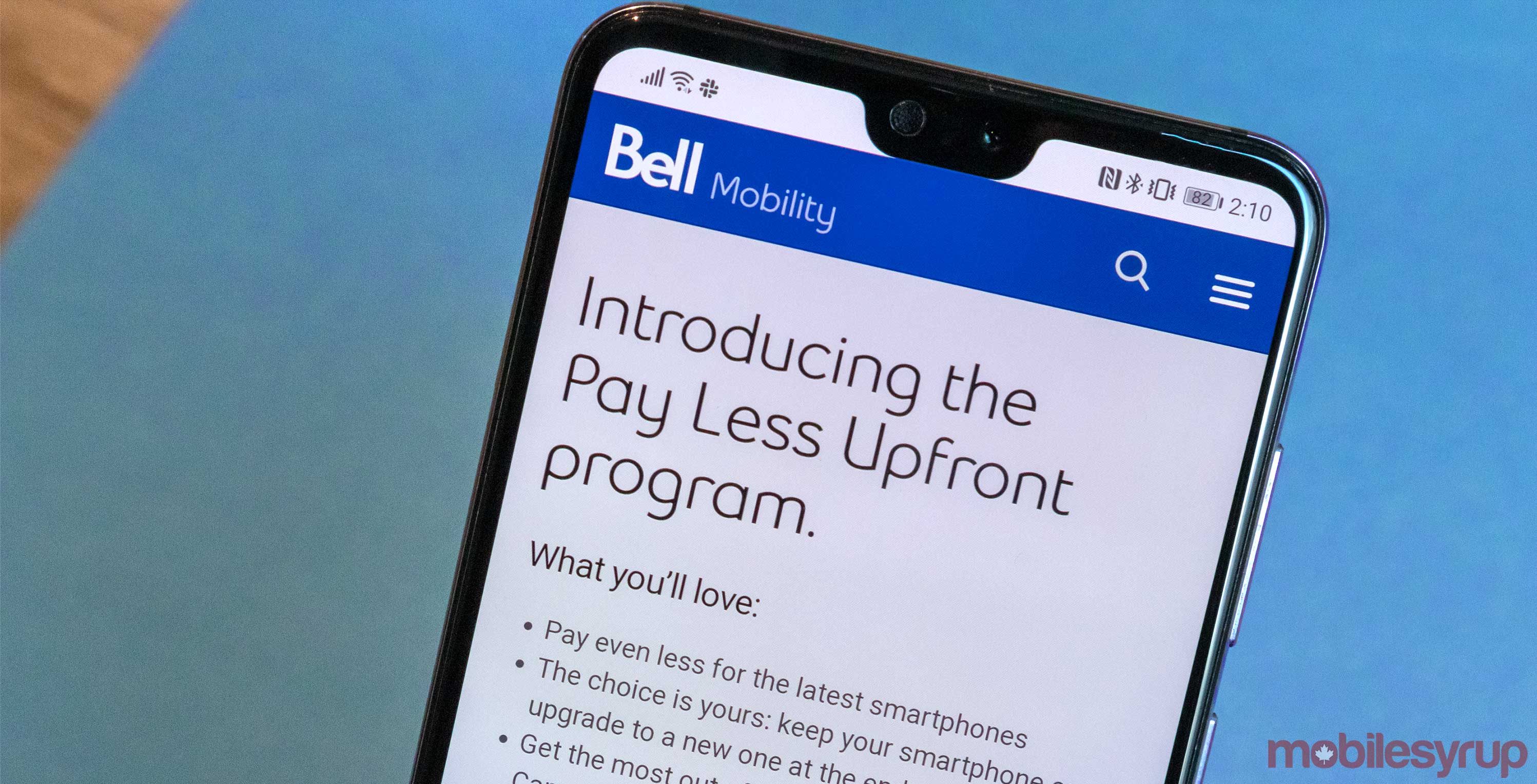
Montreal-based national service provider Bell Mobility launched its ‘Pay Less Upfront’ program on Thursday, providing extra subsidies for certain smartphones.
According to Bell’s website, the program allows Premium Smartphone Plus or Premium Smartphone Ultra Plus subscribers to purchase a smartphone on a two-year plan with the option to return the device at the end of the term, or keep the device by buying a deferred amount.
For example, a Samsung Galaxy Note 9 smartphone –regularly priced at $1,379.99 — costs $99 down with a two-year Premium Smartphone Ultra Plus plan.
However, the phone costs $0 down if purchased through the Pay Less Upfront program.
It’s worth noting that subscribers who want to keep the Note 9 would need to pay $99 at the end of the two-year term. Subscribers who want to return the phone, however, can do so at no additional cost.
“At the end of the 2-year term, you can pay back the deferred amount to keep your smartphone, or return your smartphone in good working condition at a Bell store, where you can also upgrade to a new one at that time,” reads an excerpt from the Bell Mobility website.
While the new program seems like an easy way for consumers to afford premium-tier smartphones, not all devices are eligible for the subsidy.
The only eligible devices are the iPhone XR, iPhone XS, iPhone XS Max, Samsung Galaxy Note 9 and the Huawei Mate 20 Pro, and device costs differ from phone to phone.
Subscribers who want an iPhone XS Max need to pay $300 upfront. If they want to keep the phone after 24 months, subscribers will need to $289.99.
Additionally, while subscribers need to wait 24 months to pay to keep their devices, Bell will allow subscribers to either leave the program or upgrade early to a new phone after 12 months.
“You will need to pay back the deferred amount and your outstanding device balance if you upgrade or leave the program before the end of the 2-year term,” reads an excerpt from the Bell website.
The carrier will only allow subscribers to return phones “in good working condition.”
Bell’s Pay Less Upfront program appears to be the carrier’s answer to Vancouver-based Telus’s ‘Bring-it-Back’ program launched in September 2018.
Just like Bell’s new subsidy, Telus allows subscribers to either return their phones after 24 months or pay a fee to keep their devices.
Bell and Telus’s new subsidy programs are likely a response to increasing smartphone costs, as well as declining consumer interest in purchasing the latest smartphones.
According to a January 30th, 2019 International Data Corporation (IDC) media release, global smartphone shipments declined 4.9 percent year-over-year in 2018, with manufacturers selling 375.4 million units in Q4 2018.
It’s also interesting that Bell has chosen to subsidize Apple’s 2018 line of iPhones, considering that Apple’s iPhone sales fell 15 percent in Q1 2019, compared to Q1 2018.
As such, the new subsidy isn’t just a way to convince subscribers to purchase new smartphones through Bell, it’s also a way to address declining consumer interest in Apple’s newer smartphones.
Source: Bell
MobileSyrup may earn a commission from purchases made via our links, which helps fund the journalism we provide free on our website. These links do not influence our editorial content. Support us here.


